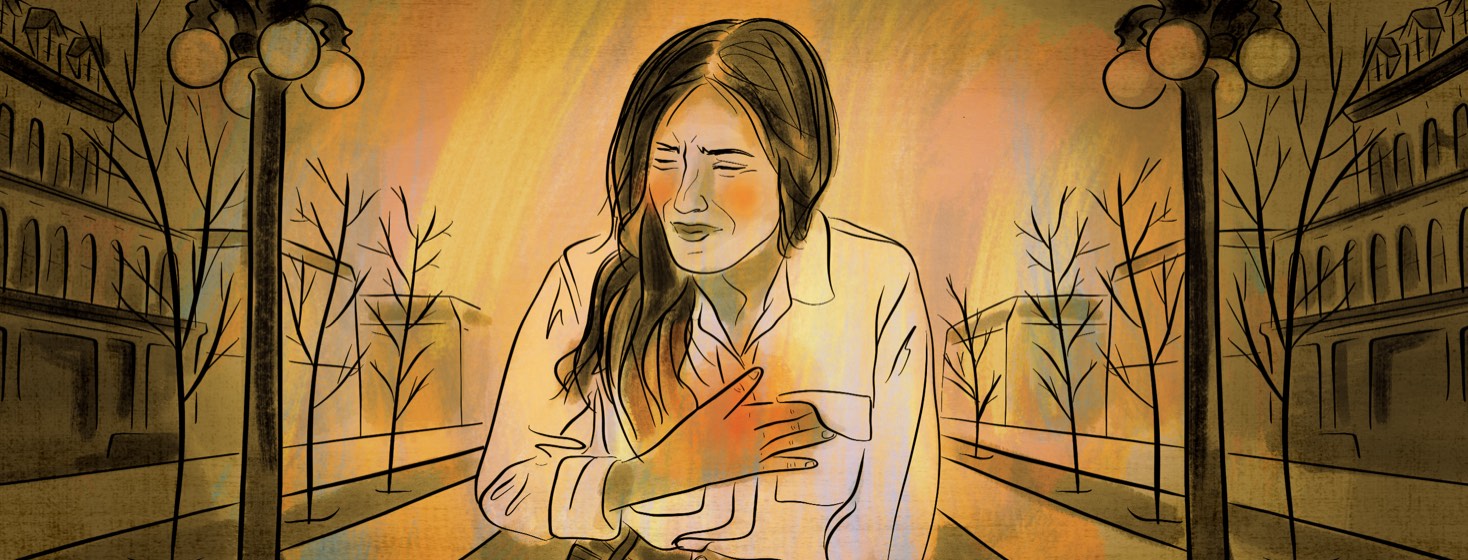A Sharp Poke in the Ribs
When I was 28 years old, I started having a strange sort of pain in my chest. It felt like something sharp was jabbing into me, just to the right of my sternum, or breastbone, every time I inhaled. The only way to avoid it was to breathe very shallowly.
After being unable to take a full, satisfying breath for several hours without--literally--breathtaking pain, I called my doctor. He and his staff were wonderful. They told me to come on over and they’d fit me in.
What was the source of this rib pain?
The doctor listened to my heart and lungs, and carefully palpated the area that hurt. It wasn’t tender, I told him; it only hurt when I inhaled. He had the nurse come in and hook me up to the electrocardiogram (EKG) machine for a reading. When he returned, the doctor told me he had good news: my heart was fine, and my lungs sounded great. I agreed that was good news. “But what’s causing this pain?”
Growing pains?
He told me that the cartilage of the sternum develops well into young adulthood, so what I might be feeling was “growing pains.” Or, he said, perhaps a tiny spur of bony cartilage was irritating the soft tissues around it when I took a breath. I should try alternating heat and ice packs on the area and take some ibuprofen for the pain. I shouldn’t worry, he said. It would go away, probably within a few days--and probably sooner.
Fortunately, the heat, ice, and ibuprofen helped, and the pain did go away within a few days. I had a few more painful episodes during the next year or so, and then it stopped occurring altogether. I forgot all about it.
Until several years ago, when I learned about costochondritis.
Costochondritis and inflammation
Costochondritis is a common condition caused when the cartilage that attaches the ribs to the sternum--the breastplate-like, hard bone in the middle of the chest--becomes inflamed. It’s most common in the first three pairs of ribs, and on the left side, though it can affect any of them and both sides. It can also affect, more rarely, the cartilage where the ribs attach to the spine at the back of the body. For some reason, costochondritis is more common in women than in men.
Common causes of costochondritis
There are several causes. The most common include strain from heavy-lifting and injury. But--and here it is--some arthritic conditions, including rheumatoid disease, can also cause costochondritis.
Similarities in rib pain symptoms
The symptoms match, exactly, what I described to my doctor that day when I was 28 years old. The pain was sharp, worsening when I inhaled and lessening when I exhaled or breathed shallowly. My case was never tender to the touch, but some are. And, while it’s possible that I might have lifted something heavy and injured myself--I was quite strong back then and took great pride in lifting heavy boxes and moving furniture around on my own--I don’t really think that’s what happened. I also don't think it had anything to do with "growing pains" or a bone spur. Maybe my old doctor didn't know about costochondritis, at all.
Instead, I think it may have been an early manifestation of early rheumatoid disease-causing inflammation in my body; my diagnosis of the active disease came just three years later. RD not only causes inflammation in the synovial joints--it causes it throughout the body. It inflames the ligaments, tendons, and cartilage, too, along with such soft tissues as the heart, lungs, eyes, kidneys, and vascular system.
Since I’ve become active on social media, I’ve read the comments of many, many other people who have RD who’ve talked about having this same, sharp pain in their upper chests or other places where the first seven ribs attach to the sternum. Most of them have rheumatologists who’ve identified the pain as costochondritis, and all of them agree it’s the very pits. For some of them, it only lasts a short time. For others, it lasts longer and may become chronic.
How is chostochondritis treated?
The treatment still includes heat, ice, and ibuprofen or other non-steroidal anti-inflammatory drugs (NSAIDs). Stretching exercises that open the ribs and stretch out the tight cartilage a little may help. And disease-modifying anti-rheumatic drugs, like sulfasalazine, are helpful when they slow RD’s progression and get it under control.
If you have symptoms of costochondritis, it’s a good idea to have your rheumatologist or primary care provider check it out. The pain is sometimes very similar to that of a heart attack, so like my old doctor did so many years ago, get that ruled out first.
Costochondritis may not be serious, but it sure is a sharp poke in the ribs.

Join the conversation